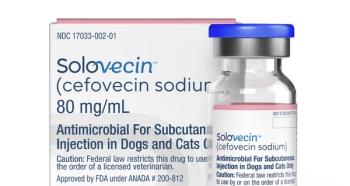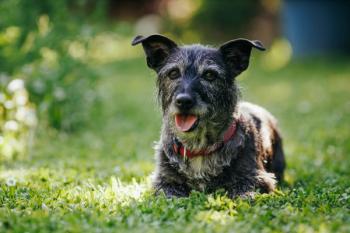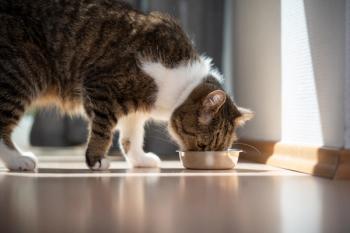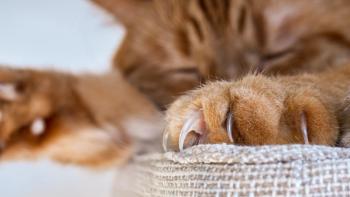
Bird flu's march poses new risks to companion animals
National Report - Media reports on avian influenza have fanned the flames of hyperbole among the lay press in much of the world, and public officials aren't doing much to quell fears, either.
NATIONAL REPORT — Media reports on avian influenza have fanned the flames of hyperbole among the lay press in much of the world, and public officials aren't doing much to quell fears, either.
In mid February, Dr. David Nabarro, a physician with the World Health Organization responsible for tracking and containing the virus, told a Portugal newspaper that the H5N1 strain was just two mutations away from being easily communicable among people.
Dr. Taronna Maines, a microbiologist with the Centers for Disease Control and Prevention, inoculates a 10-day-old embryonated hen's eggs with H5N1 to investigate the pathogenicity and transmissibility of newly emerging H5N1 viruses.
In early March, he warned the virus could produce an epidemic in humans at any time, and it will be popping up in the United States some time this summer, thought to be spread by migrating birds passing over the Arctic Circle into Alaska.
A week later, Health and Human Services Secretary Michael Leavitt recommended that Americans stock up on canned tuna and powdered milk to prepare for the approaching outbreak in North America.
The H5N1 bird flu virus has killed or caused the depopulation of tens of millions of birds since 2003, and there have been about 180 confirmed cases of the strain in humans, causing about 100 deaths, mostly in Asia, according to the World Health Organization. H5N1 also was discovered in Israel at presstime.
Potential harm to the world's pets began to manifest, too, as Germany announced that a cat died from ingesting an infected bird, and the first possible canine case was suspected but unconfirmed in Azerbaijan at presstime.
For U.S. veterinarians, it's time to reinforce the importance of keeping cats indoors, says Dr. James Richards, director of the Cornell Feline Health Center.
"The fact of the matter is that the experts are watching this just as close as anyone else, and it's a little unpredictable as to how this virus might behave in nature and the cat population at this point," Richards says. "But we certainly do know that keeping cats away from infected birds and keeping cats away from other infected cats, regardless of the scenario and how it presents itself, is going to be the first line of defense for us. The best way to keep cats safe for lots of reasons is to maintain them indoors, and that still stands."
And once the high-pathogenic H5N1 arrives in the United States, considered by experts as just a matter of time, veterinarians will need to be watchful of fevers and respiratory diseases to stem the spread among cats.
"How the virus is going to affect cats in nature is still not known in terms of what kinds of signs that you might see, but certainly respiratory stress and fever are major things that we would look for," Richards says.
Cats could be vectors as well as end hosts, according to a 2004 article in the journal Science (Sept. 2, 2004). Thijs Kuiken, a veterinary pathologist in the department of virology at the Erasmus Medical Center in Rotterdam, Holland, was lead author in the study that introduced the H5N1 virus into the airways of three cats. Three other cats were fed an infected chick, and two cats were exposed to the virus by being placed in the same cage as the first three cats.
The cats soon showed signs of disease: raised body temperature, decreased activity and labored breathing. All developed severe lung disease. One cat died after six days of infection.
On the research front
With the ability to be on the forefront of recognizing an influenza pandemic for the first time in history, multidisciplinary researchers around the world are stripping H5N1 down to its DNA.
Scientists at St. Jude Children's Hospital in Memphis said in January that their extensive study doubled the amount of genetic information available on the genes and proteins of influenza viruses that contribute to their evolution (Science, Jan. 27).
University of Pittsburgh researchers announced in January that they genetically engineered a modified-live vaccine from the critical components of H5N1 that completely protected mice and chickens from infection (Journal of Virology, Feb. 15).
Researchers at the University of Wisconsin-Madison School of Veterinary Medicine are uncovering clues to the deadly bug, too. In 2005, Dr. Yoshihiro Kawaoka and his team found a way to bolster vaccine production, and recently it published findings (Nature, Jan. 26) on how an electron microscope can help find ways to design new antiviral drugs and harness flu viruses for more efficient and rapid vaccine production.
Newsletter
From exam room tips to practice management insights, get trusted veterinary news delivered straight to your inbox—subscribe to dvm360.






